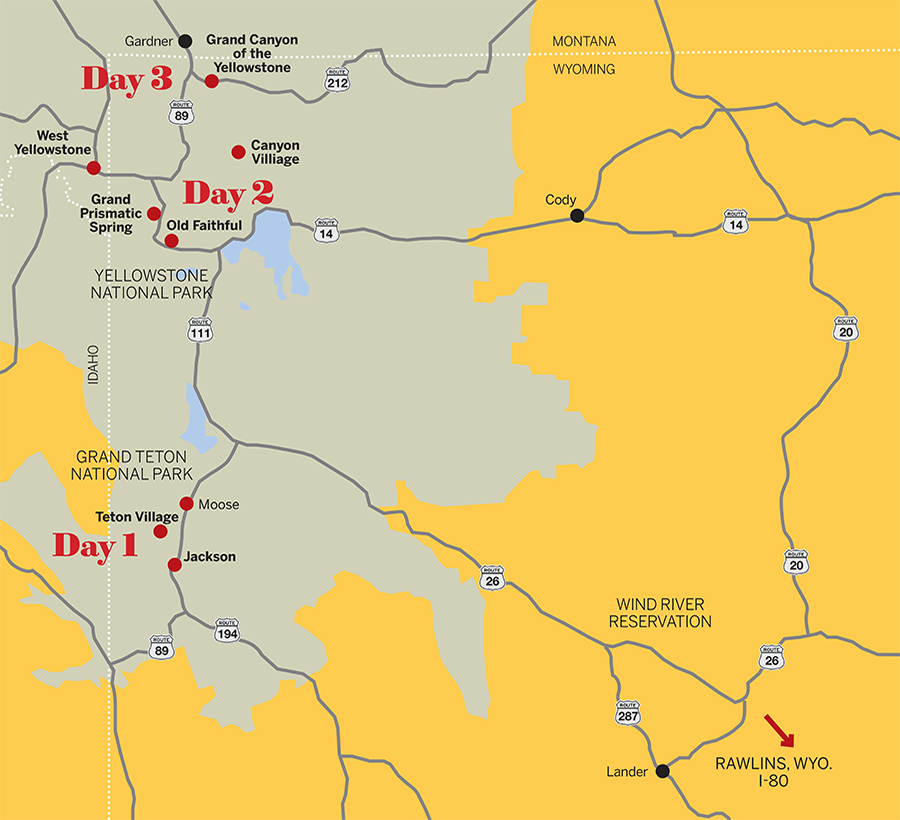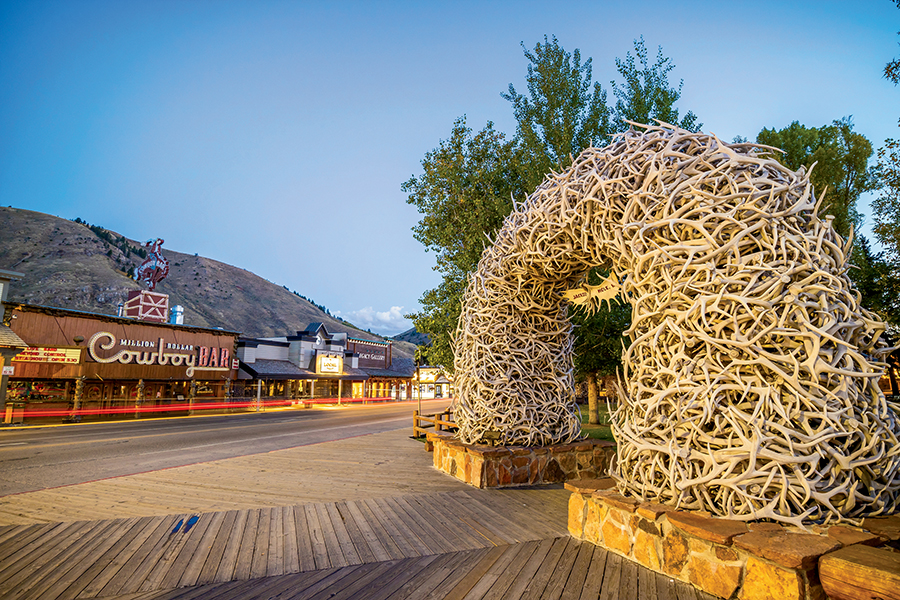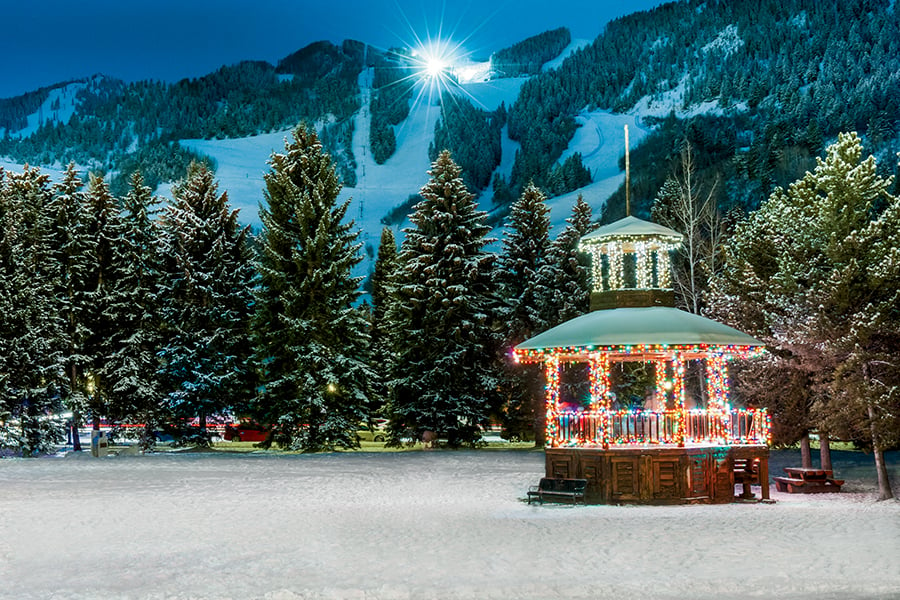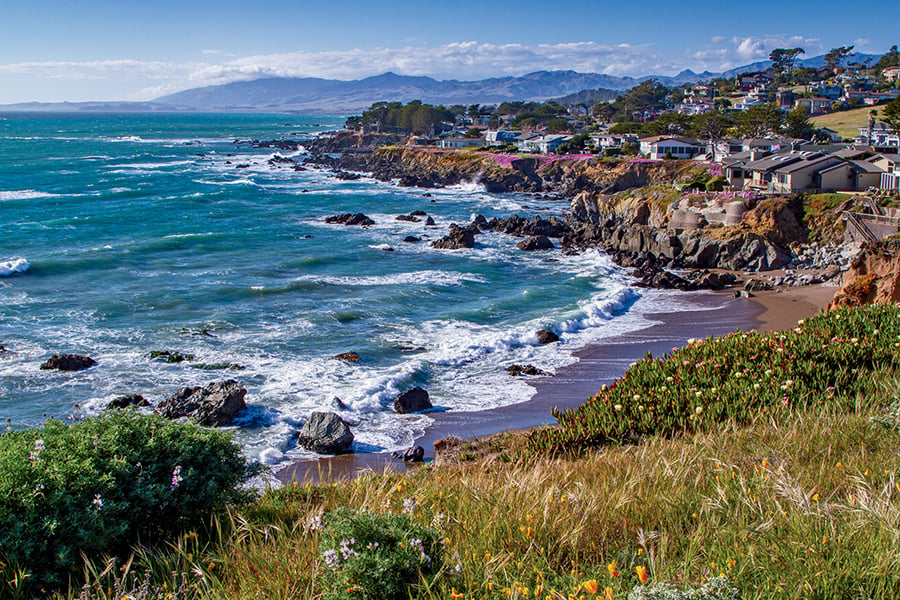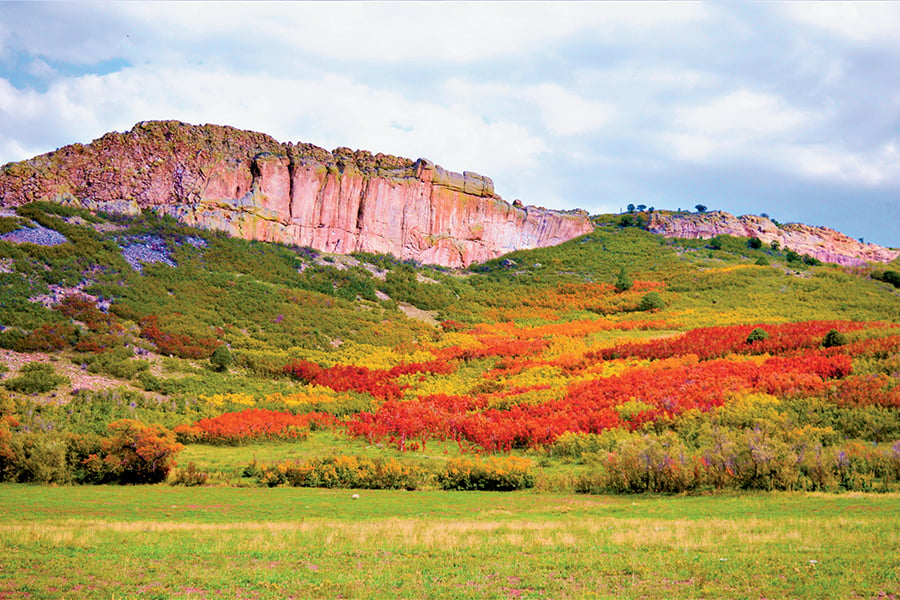Three Days In: Wyoming’s National Parks
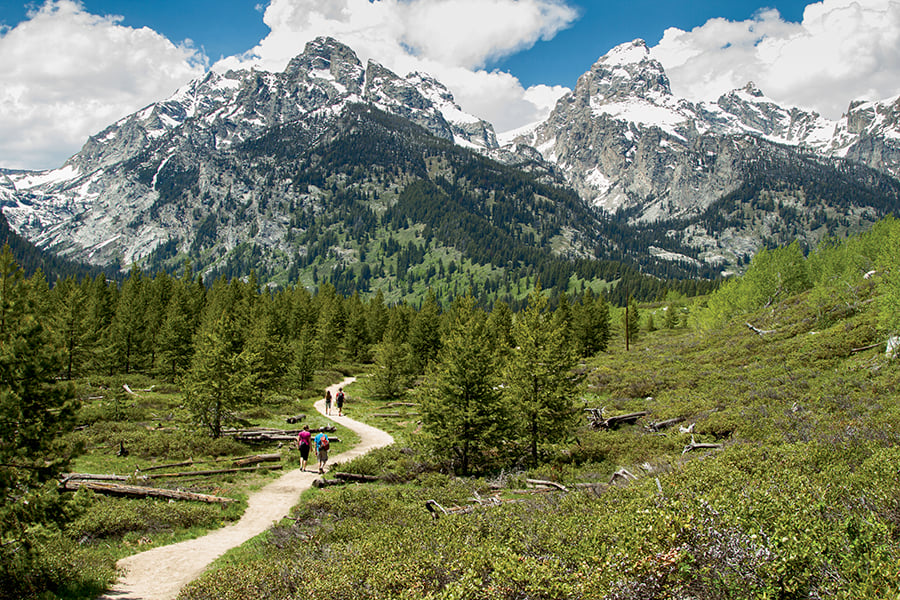
It doesn’t matter how many times I see the jagged silhouette of the Tetons rising from the valley floor, the view never gets old.
That view is part of what makes a trip to Jackson, Wyo., and Grand Teton and Yellowstone National Parks so special, and it starts immediately as you come into Jackson via Togwotee Pass on Highway 26. The extra 15-minute drive along Highway 287 from Rawlins, is worth it for that first glimpse of the mountains as you descend toward Jackson and Grand Teton National Park. From here, the views never quit.
Day 1
Jackson and Teton Village
More than three million people visited Grand Teton National Park in 2019, mostly during the summer, and almost all of them also spent time in Jackson. Just outside of Jackson is Teton Village, home to Jackson Hole Mountain Resort, where the atmosphere feels a little quieter in the summer and where you’ll find one of the best views in the valley.
Take the Aerial Tram to the top of 10,449-foot Rendezvous Mountain, and as you glide up the 4,000 vertical feet to the summit, watch for bears and moose below. There are several hiking trails to explore the summit, but the view at the top surrounds you and is worth just standing there and taking it all in. Whatever your plan, bring extra layers, as even on a sunny day it can be windy, and before you head back down to the valley floor, grab a waffle at Crobet’s Cabin. I’m always tempted by the peanut butter and bacon waffle, but have yet to deviate from the Nutella.
The short, scenic drive along Moose-Wilson Road, from Teton Village to Grand Teton National Park, travels a narrow dirt road, which can be slow, depending on traffic. You’ll come out in the town of Moose, next to the Craig Thomas Discovery and Visitor Center. It’s worth stopping here, as the Visitor Center offers interactive displays about the park.
For lunch, head to Dornan Pizza & Pasta Company just outside the park entrance. The food is good, and it’s even better if you can snag a table outside or near a window where you’ll get a panoramic view of the Tetons while you eat.
One of the best ways to escape the midday crowds in Grand Teton is to get on the water. There are several companies that offer guided scenic floats through the park. Barker-Ewing Whitewater offers a 10-mile float entirely in the park along one of the most scenic sections of the Snake River. You’ll learn about the park and the wildlife from your guide without the crush of other visitors around you.
Back in Jackson, use the time before dinner to wander the Town Square and check out the shops and art galleries. For a small town, Jackson has an impressive restaurant scene. If you’re looking for fine dining the AAA Three Diamond Snake River Grill is at the top of my list. I suggest making a reservation beforehand, though. If you are looking for something more casual, check out the AAA Approved Snake River Brewing, which offers locally brewed beer and pub food. Personally, I find the real star is the s’more, which is toasted in a wood fired oven and served on a homemade graham cracker. Absolutely get it with ice cream.
Day 2
Grand Teton and Yellowstone National Parks
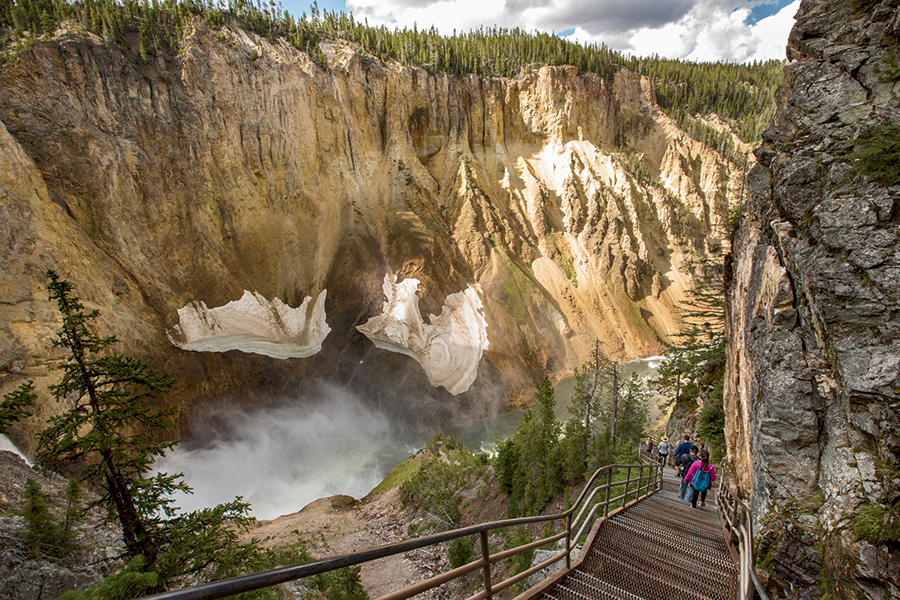
Beginning along the rim of the Grand Canyon of the Yellowstone, Uncle Tom’s Trail includes 328 steps as it leads down to the base of the 308-foot-high Lower Falls. There are numerous benches and platforms to rest along the way. © Eric Lindberg
Grand Teton and Yellowstone National Park sit directly adjacent to each other. That means you can explore Grand Teton as you make your way to Yellowstone. Most first-time visitors to Grand Teton National Park head to Jenny Lake, where you can hike to Inspiration Point and Hidden Falls, but for an easy day hike, I prefer Leigh Lake. Park in the String Lake picnic area, but I suggest arriving early in the day, as this area has become increasingly popular and parking is limited. If you are able to secure a parking spot, grab your bear spray and follow the sign near String Lake to Leigh Lake. The 5.4-mile out and back trail is nearly entirely flat and passes sandy beaches with stunning Teton views. Plus, you can turn around at any time.
While you can always pack a picnic, Grand Teton has some of the best food I’ve had in a national park. The AAA Three Diamond Signal Mountain Lodge on Jackson Lake is known for its nachos and blackberry margaritas at the Trapper Grill. Farther down the road is the AAA Three Diamond Jackson Lake Lodge, with its famous Mural Room restaurant. The room is named after the 10 panels painted with scenes depicting the 1837 Rendezvous of fur trappers and traders; however, its main attraction is the floor-to-ceiling windows. The menu leans more toward fine dining, but the atmosphere is still casual for lunch. Wherever you choose to eat, just remember to plan for extra time beyond the mileage on the map. Traffic can be slow, and you’ll want to stop at pullouts to take in the views or watch wildlife.
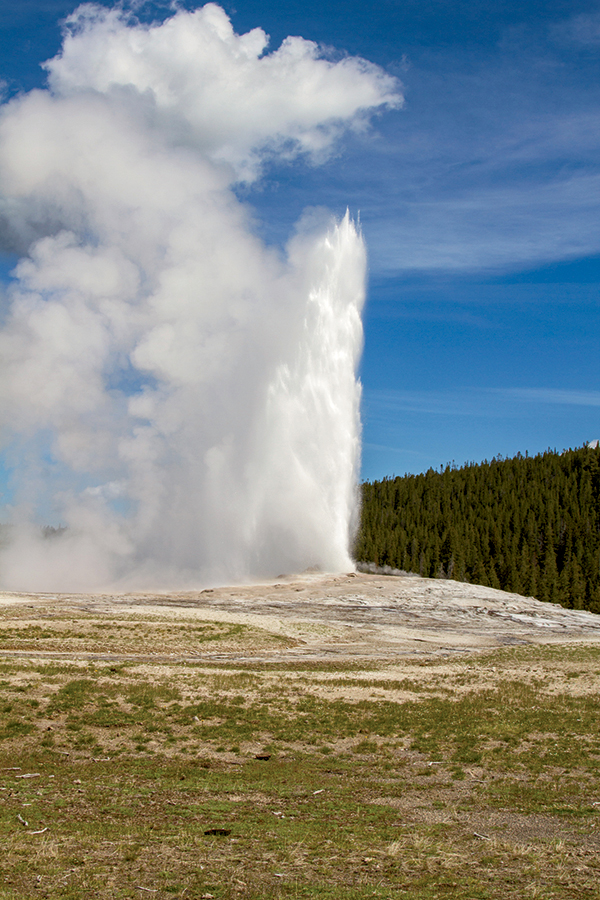
Yellowstone’s Old Faithful is the most famous geyser in the world due to its frequent and predictable eruptions. © Eric Lindberg
Your drive along Grand Teton’s main road will take you to Yellowstone’s southern entrance. I had a ranger tell me the best time to see Yellowstone’s most-popular natural wonders during the summer is before 9 a.m. or after 3 p.m., and that has held true. Coming from Grand Teton, you might have perfect timing for a stop at the park’s most-famous, and most-visited attraction: Old Faithful. If you’ve never been to Yellowstone, Old Faithful is worth visiting. The reason it’s so famous: its predictable—usually erupting every two hours or less—and it’s impressive, spewing steaming water nearly 200 feet in the air.
The Park’s lodges, such as the one at Old Faithful, have a rustic feel, and provide easy access to all the park offers; however, they do book up far in advance, so you’ll want to make reservations for these well ahead of time—even the year before you go. West Yellowstone, Montana, just outside the West Entrance of the park, offers a variety of overnight options, including the AAA Three Diamond Best Western Desert Inn, and again, you’ll want to reserve a room as far in advance as you can.
Day 3
Thermal features, waterfalls, and wolves
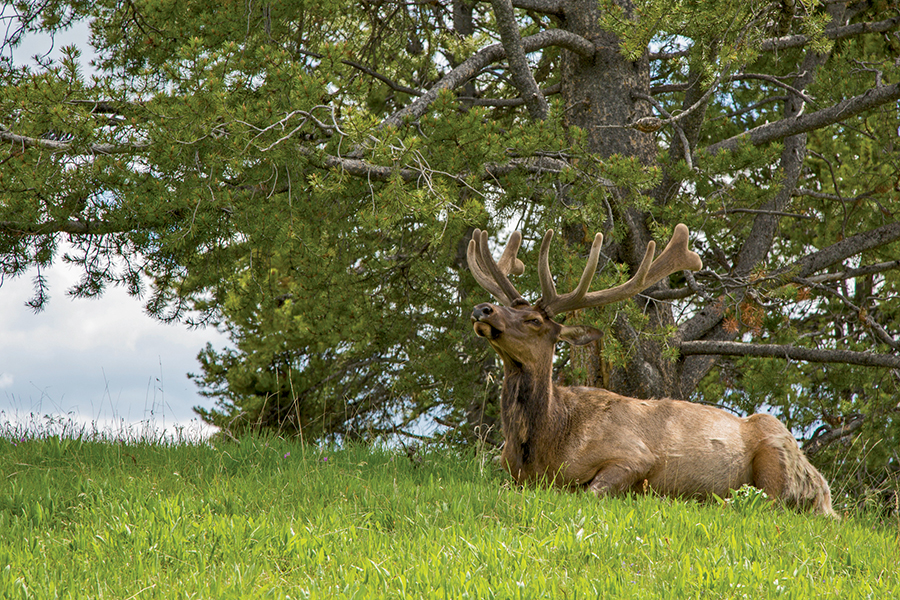
In summer, Yellowstone provides food and habitat for an estimated 10,000-20,000 elk. Their huge antlers, discarded and regrown each year, make elk a popular photo subject. © Eric Lindberg
Yellowstone’s gurgling mud pots, vibrant-colored hot water basins, and geysers erupting hundreds of feet in the air, along with the chance to see bison, elk, bears, and even wolves understandably draws people from around the world. Start your day early, and pack a lunch, because you’re likely to get stuck in traffic at some point. If you’re staying in West Yellowstone, I suggest stopping by the AAA Approved Ernie’s Bakery. They sell boxed lunches you can order the night before and pick up in the morning.
Get an early start and backtrack a bit to the Midway Geyser Basin. Here, you can see Grand Prismatic Spring, the famous turquoise pool surrounded by a rainbow of fluorescent colors. The best way to truly appreciate it is to see it from above. Head to the nearby Fairy Falls Trailhead. Parking is limited, so hitting this 0.6-mile hike up the Grand Prismatic Trailhead Overlook Trail is best attempted either early in the morning or late in the day. You won’t get the same straight-on view you might see in magazines, but this vantage point will give you a better sense of its scale, and a better look at the hot spring’s colors.
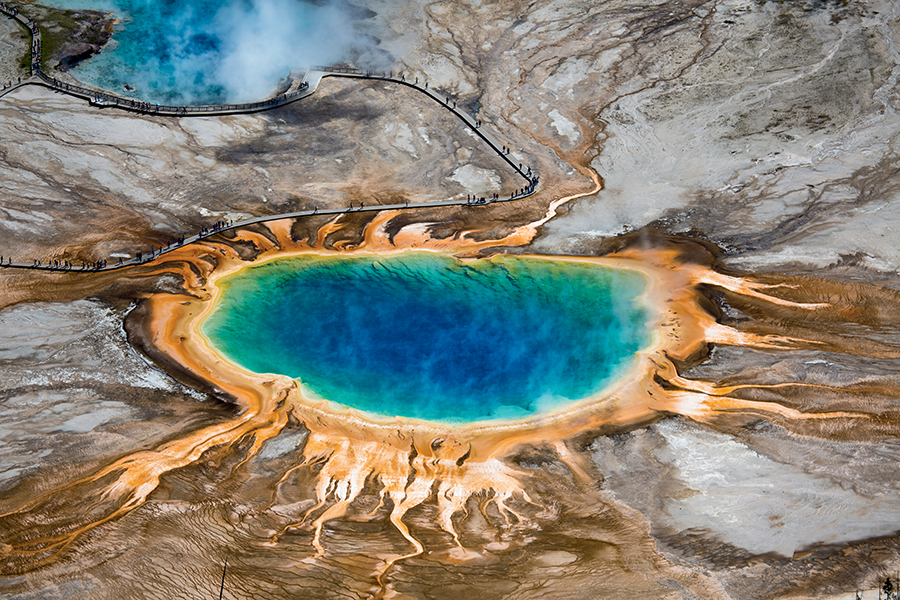
The colorful Grand Prismatic Spring at Yellowstone National Park is the largest hot spring in the U.S. and third largest in the world. © Eric Lindberg
After your morning hike, head north toward Norris Geyser Basin. If it’s still early in the day, you might get the Artist Paintpots, a group of bubbling mudpots and hissing vents, largely to yourself. Next, head toward Canyon and the Grand Canyon of the Yellowstone, another of the park’s most iconic natural wonders. Yellowstone is famous for its thermal features, but the park is also full of impressive waterfalls. The Lower Falls in Yellowstone’s Grand Canyon plunges 308 feet into the 20-mile canyon. While the thermal features of the park give the landscape an alien feel, the Grand Canyon of the Yellowstone feels out-of-this-world, but wild and untamed, despite the scenic drives and pullouts that provide a variety of views of the canyon and the falls.
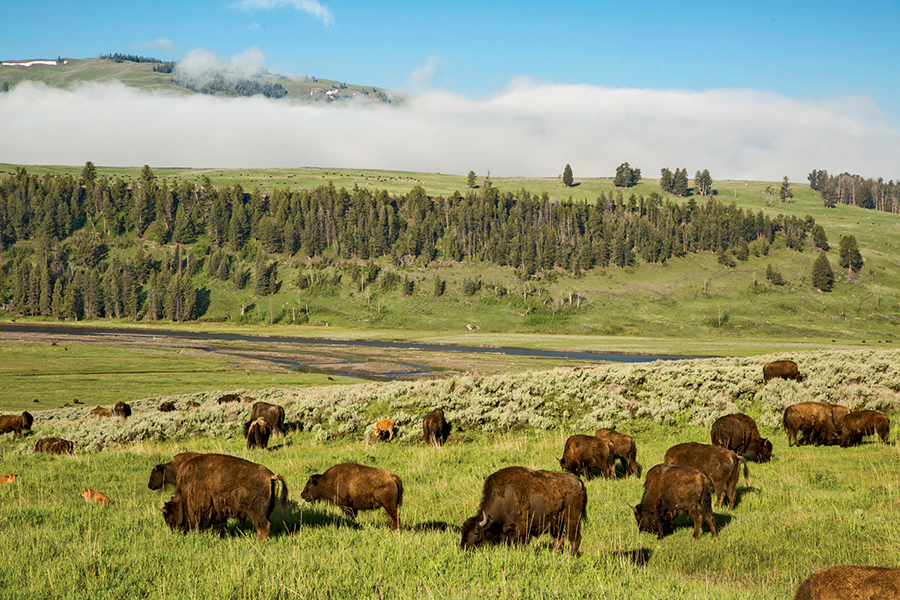
Yellowstone is home to the largest group of free-range, wild bison in North America, and can be seen year-round in many areas of the park. © Eric Lindberg
If you have extra time, drive north to Mammoth to see the terraced hot springs, and end your day in the Lamar Valley between Mammoth and Canyon. While you’ll see plenty of wildlife throughout Yellowstone, the Lamar Valley is special and worth seeing any time of day. The lush open meadows provide an excellent habitat for pronghorn, elk, and bison, and allow unobstructed viewing of the animals from the road. Plus, where these prey animals congregate, predators like grizzly bears and wolves follow; although, like all wildlife, there’s no guarantee you’ll see them. However, serious wolf watchers set up their spotting scopes in the Lamar Valley, typically at dusk and dawn, when the animals are most active. So, pack a snack, grab your binoculars, and take a moment to pause and enjoy the view.
More “Three Days In”
Watch your inbox for more things to do in Wyoming’s National Parks in the next EnCompass Exclusive e-newsletter—a monthly email that provides exclusive content you won’t find in the print edition. Plus, keep an eye out for the next series of “Three Days In” in the July-August 2020 edition of EnCompass.

